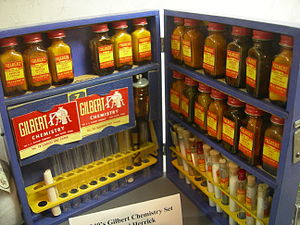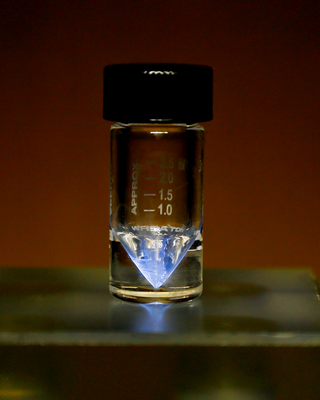
Actinium is a chemical element; it has symbol Ac and atomic number 89. It was first isolated by Friedrich Oskar Giesel in 1902, who gave it the name emanium; the element got its name by being wrongly identified with a substance André-Louis Debierne found in 1899 and called actinium. Actinium gave the name to the actinide series, a set of 15 elements between actinium and lawrencium in the periodic table. Together with polonium, radium, and radon, actinium was one of the first non-primordial radioactive elements to be isolated.
The actinide or actinoid series encompasses at least the 14 metallic chemical elements in the 5f series, with atomic numbers from 89 to 102, actinium through nobelium. The actinide series derives its name from the first element in the series, actinium. The informal chemical symbol An is used in general discussions of actinide chemistry to refer to any actinide.
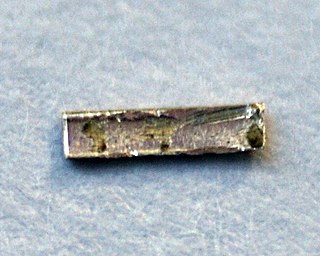
Radium is a chemical element; it has symbol Ra and atomic number 88. It is the sixth element in group 2 of the periodic table, also known as the alkaline earth metals. Pure radium is silvery-white, but it readily reacts with nitrogen (rather than oxygen) upon exposure to air, forming a black surface layer of radium nitride (Ra3N2). All isotopes of radium are radioactive, the most stable isotope being radium-226 with a half-life of 1,600 years. When radium decays, it emits ionizing radiation as a by-product, which can excite fluorescent chemicals and cause radioluminescence.
Meccano is a brand of model construction system created in 1898 by Frank Hornby in Liverpool, England. The system consists of reusable metal strips, plates, angle girders, wheels, axles and gears, and plastic parts that are connected using nuts and bolts. It enables the building of working models and mechanical devices.
A period 7 element is one of the chemical elements in the seventh row of the periodic table of the chemical elements. The periodic table is laid out in rows to illustrate recurring (periodic) trends in the chemical behavior of the elements as their atomic number increases: a new row is begun when chemical behavior begins to repeat, meaning that elements with similar behavior fall into the same vertical columns. The seventh period contains 32 elements, tied for the most with period 6, beginning with francium and ending with oganesson, the heaviest element currently discovered. As a rule, period 7 elements fill their 7s shells first, then their 5f, 6d, and 7p shells in that order, but there are exceptions, such as uranium.

American Flyer is a brand of toy train and model railroad, originally manufactured in the United States.
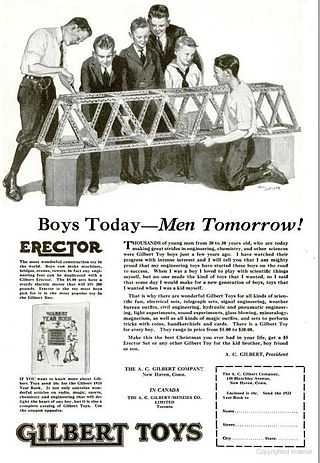
Erector Set was a brand of metal toy construction sets which were originally patented by Alfred Carlton Gilbert and first sold by his company, the Mysto Manufacturing Company of New Haven, Connecticut, in 1913. In 1916, the company was reorganized as the A. C. Gilbert Company. The brand continued its independent existence under various corporate ownerships until 2000, when Meccano bought the Erector brand and consolidated its worldwide marketing with its own brand. The coverage here focuses on the historical legacy of the classic Erector Set; for current developments under the "Erector by Meccano" brand name, see the Meccano article.

Alfred Carlton Gilbert was an American inventor, athlete, magician, toy maker and businessman. As the founder of A. C. Gilbert Company, Gilbert was known for inventing the Erector Set and American Flyer Trains.

The Eldorado Mine is a defunct mine located in Port Radium, Northwest Territories, Canada. The site, which covers 12 hectares, is located next to Echo Bay in the shore of Great Bear Lake.
Uranium (92U) is a naturally occurring radioactive element that has no stable isotope. It has two primordial isotopes, uranium-238 and uranium-235, that have long half-lives and are found in appreciable quantity in the Earth's crust. The decay product uranium-234 is also found. Other isotopes such as uranium-233 have been produced in breeder reactors. In addition to isotopes found in nature or nuclear reactors, many isotopes with far shorter half-lives have been produced, ranging from 214U to 242U. The standard atomic weight of natural uranium is 238.02891(3).
Lead (82Pb) has four observationally stable isotopes: 204Pb, 206Pb, 207Pb, 208Pb. Lead-204 is entirely a primordial nuclide and is not a radiogenic nuclide. The three isotopes lead-206, lead-207, and lead-208 represent the ends of three decay chains: the uranium series, the actinium series, and the thorium series, respectively; a fourth decay chain, the neptunium series, terminates with the thallium isotope 205Tl. The three series terminating in lead represent the decay chain products of long-lived primordial 238U, 235U, and 232Th. Each isotope also occurs, to some extent, as primordial isotopes that were made in supernovae, rather than radiogenically as daughter products. The fixed ratio of lead-204 to the primordial amounts of the other lead isotopes may be used as the baseline to estimate the extra amounts of radiogenic lead present in rocks as a result of decay from uranium and thorium.

A chemistry set is an educational toy allowing the user to perform simple chemistry experiments.

The Gilbert U-238 Atomic Energy Lab is a toy lab set designed to allow children to create and watch nuclear and chemical reactions using radioactive material. The Atomic Energy Lab was released by the A. C. Gilbert Company in 1950.

Educational toys are objects of play, generally designed for children, which are expected to stimulate learning. They are often intended to meet an educational purpose such as helping a child develop a particular skill or teaching a child about a particular subject. They often simplify, miniaturize, or even model activities and objects used by adults.
Porter Chemical Company was an American toy manufacturer that developed and produced chemistry sets aimed as educational toys for aspiring junior scientists. The company's Chemcraft kits were first sold at major retail by Woodward & Lothrop, and appeared soon after at other retailers in the country. The company would later form a relationship with the Lionel Corporation, famed American maker of toy trains. The company also made the Microcraft line of microscope sets. The Chemcraft and Microcraft line competed with similar sets offered by A. C. Gilbert Company as part of a boom in science educational toys spurred by the Space Race between the US and USSR in the late 1950s.

Herbert Newby McCoy was an American chemist who taught at the University of Chicago and the University of Utah and was the vice-president of Lindsay Light & Chemical Company. He contributed numerous papers on physical chemistry, radioactivity and rare earths.
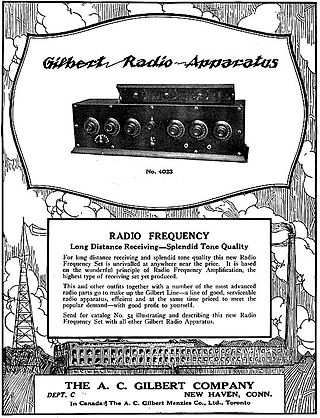
WCJ was a radio station, located in New Haven, Connecticut, that was licensed to the A. C. Gilbert Company from September 29, 1921 to December 1, 1922. Although short-lived, it was the first broadcasting station licensed in the state of Connecticut, and one of the first in the United States.
WQB was a radio station, located in Hartford, Connecticut, that was licensed to the C. D. Tuska Company from August 22, 1921 to June 24, 1922. Although it was never formally classified as being a broadcasting station by the United States government, it was one of the first stations in the U.S. to make regular broadcasts intended for the general public, and many contemporary publications included it in their broadcasting station reviews.
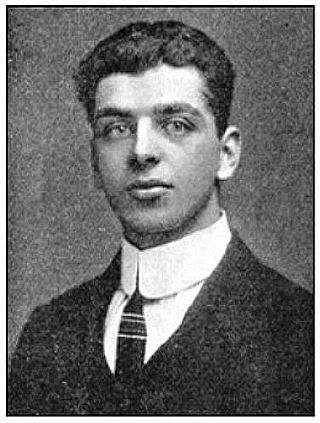
Clarence Denton "C. D." Tuska was an early radio experimenter and amateur operator, who also became one of the first radio receiver manufacturers. He is best known as the co-founder, along with Hiram Percy Maxim, of the American Radio Relay League (ARRL). He was also the original editor and owner of the amateur radio publication QST, which he subsequently sold to the ARRL in 1919, as part of his reorientation toward professional activities within the radio industry.
Zinaida Vasilyevna Yershova was a Soviet and Russian chemist, physicist and engineer. She spent her entire career working with radioactive elements and headed laboratories producing radioactive materials used mostly in the Soviet atomic bomb project and the Soviet space program.
